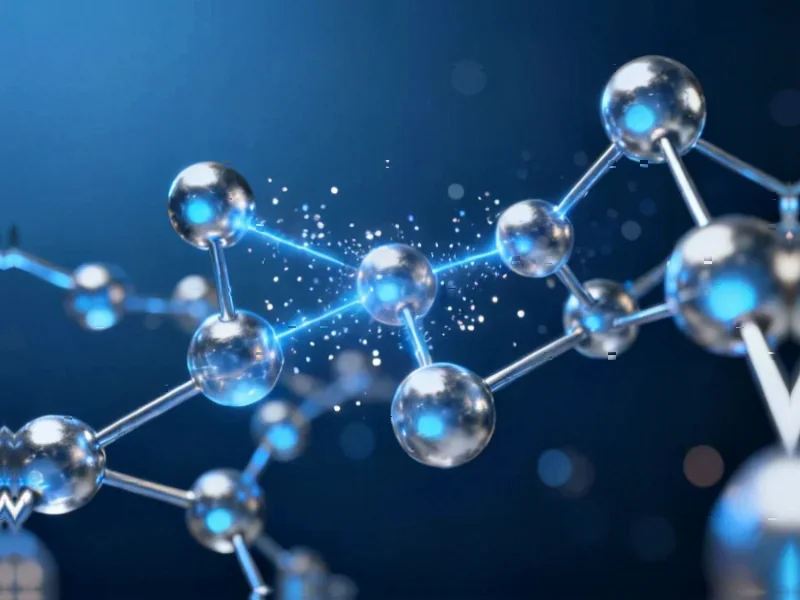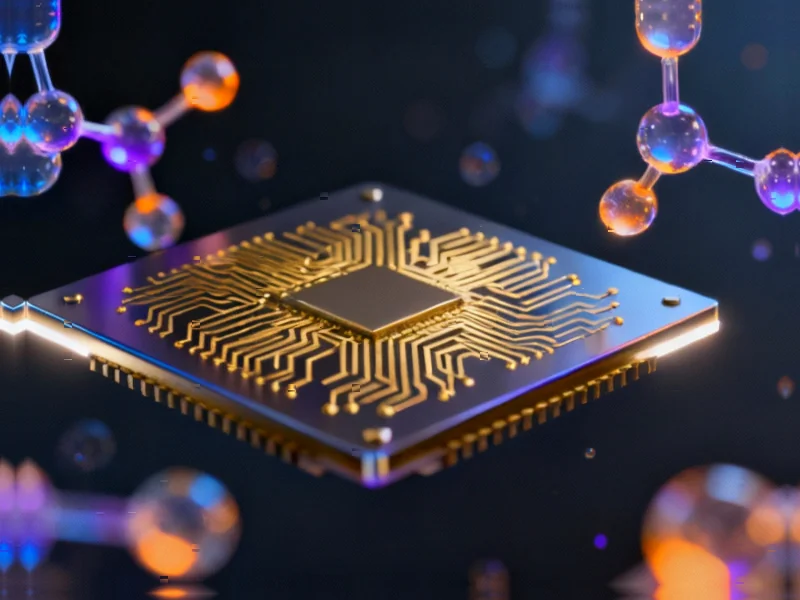Breakthrough in Quantum Material Research
Scientists have achieved a significant milestone in quantum materials research with the development of a metallic p-wave magnet featuring a commensurate spin helix. This discovery, published in Nature, represents a substantial advancement in our understanding of exotic magnetic states and their potential applications in future computing technologies. The material demonstrates unique electronic properties that could pave the way for novel spintronic devices and quantum computing components.
Table of Contents
Advanced Material Synthesis and Characterization
The research team employed sophisticated fabrication techniques to create single crystals of Gd(RuRh)Al using high-vacuum floating zone furnaces under argon gas flow. Material quality was rigorously verified through multiple analytical methods, including powder X-ray diffraction and energy-dispersive X-ray spectroscopy. The precise orientation of sample surfaces was achieved using Laue X-ray diffraction and diamond saw cutting, ensuring accurate measurement of the material’s anisotropic properties.
Magnetization measurements were conducted using state-of-the-art Quantum Design instruments, with magnetic fields applied along the crystallographic c-axis. The team implemented careful demagnetization corrections by modeling sample shapes as ellipses, enabling accurate comparison of field-dependent properties across different sample geometries., according to related coverage
Revolutionary Transport Properties
The electrical transport measurements revealed extraordinary characteristics that distinguish this p-wave magnet from conventional magnetic materials. Researchers polished single-crystal plates and established electrical contacts using 30-μm gold wires with silver paste, configuring the sample geometry to measure current flow along the a-axis while maintaining the magnetic field parallel to the c-axis., according to technology trends
What makes this material particularly remarkable is its demonstration of collinear spin splitting in the magnetic Brillouin zone. The electronic band structure exhibits an energy gap between spin-up and spin-down bands, characteristic of p-wave spin splitting. This property enables unique control over electron spin states, which could be leveraged in spin-based electronic devices., according to industry reports
Nanofabrication and Device Integration
The research team demonstrated the practical integration of this exotic material into functional devices using focused-ion-beam systems. They carved circular lamellae from bulk crystals and mounted them onto aluminum oxide substrates with gold contacts. The entire fabrication process included:
- Precision thinning and shaping using ion-beam milling
- Secure attachment via ion-beam-induced platinum deposition
- Creation of meander-shaped bonds for optimal electrical performance
- Protective capping with 5 nm aluminum oxide using atomic layer deposition
Remarkably, the nanofabricated devices reproduced the transport properties of bulk single crystals, confirming the scalability of these exotic quantum effects to practical device dimensions., according to related news
Symmetry Analysis and Theoretical Framework
The theoretical understanding of this p-wave magnet relies on sophisticated symmetry analysis. Researchers identified that the material possesses a six-fold expanded magnetic unit cell and specific spin-space group symmetries that govern its unusual electronic behavior. The presence of nodal planes in momentum space, where energy bands become two-fold degenerate, represents a fundamental characteristic of this quantum material.
The combination of symmetry operations and their effect on spin polarization provides crucial insights into how these materials can maintain coherent spin states over extended distances. This property is particularly valuable for quantum information processing applications where maintaining quantum coherence is essential., as additional insights
Computational Validation and Future Implications
Spin density functional theory calculations provided crucial validation of the experimental findings. Using advanced computational methods including the projector augmented-wave approach and DFT+U methodology, researchers accounted for strong correlation effects in gadolinium’s 4f orbitals. These calculations confirmed the stability of the observed magnetic structure and its electronic properties.
The discovery of this metallic p-wave magnet opens new possibilities for:
- Advanced spintronic devices with enhanced energy efficiency
- Quantum computing components exploiting topological protection
- Novel sensor technologies with unprecedented sensitivity
- Next-generation memory devices with improved density and performance
As research in quantum materials continues to advance, the integration of such exotic magnetic states into practical computing architectures represents an exciting frontier for industrial computing applications. The demonstrated control over spin textures and electronic band structures in this work provides a foundation for developing entirely new classes of computing devices that leverage quantum mechanical effects for enhanced performance and functionality.
Related Articles You May Find Interesting
- Urban Infrastructure’s Flood Defense: How Cities Are Building Resilience Against
- Scientists Discover Metallic P-Wave Magnet with Unique Spin Helix Structure
- Research Correction Explains How Predictive Learning Shapes Brain Layer Organiza
- Breakthrough Nanogel Technology Shows Promise for Targeted Drug Delivery of Nega
- Advanced Geospatial Analysis Identifies Optimal Rainwater Harvesting Sites in Pa
This article aggregates information from publicly available sources. All trademarks and copyrights belong to their respective owners.
Note: Featured image is for illustrative purposes only and does not represent any specific product, service, or entity mentioned in this article.



